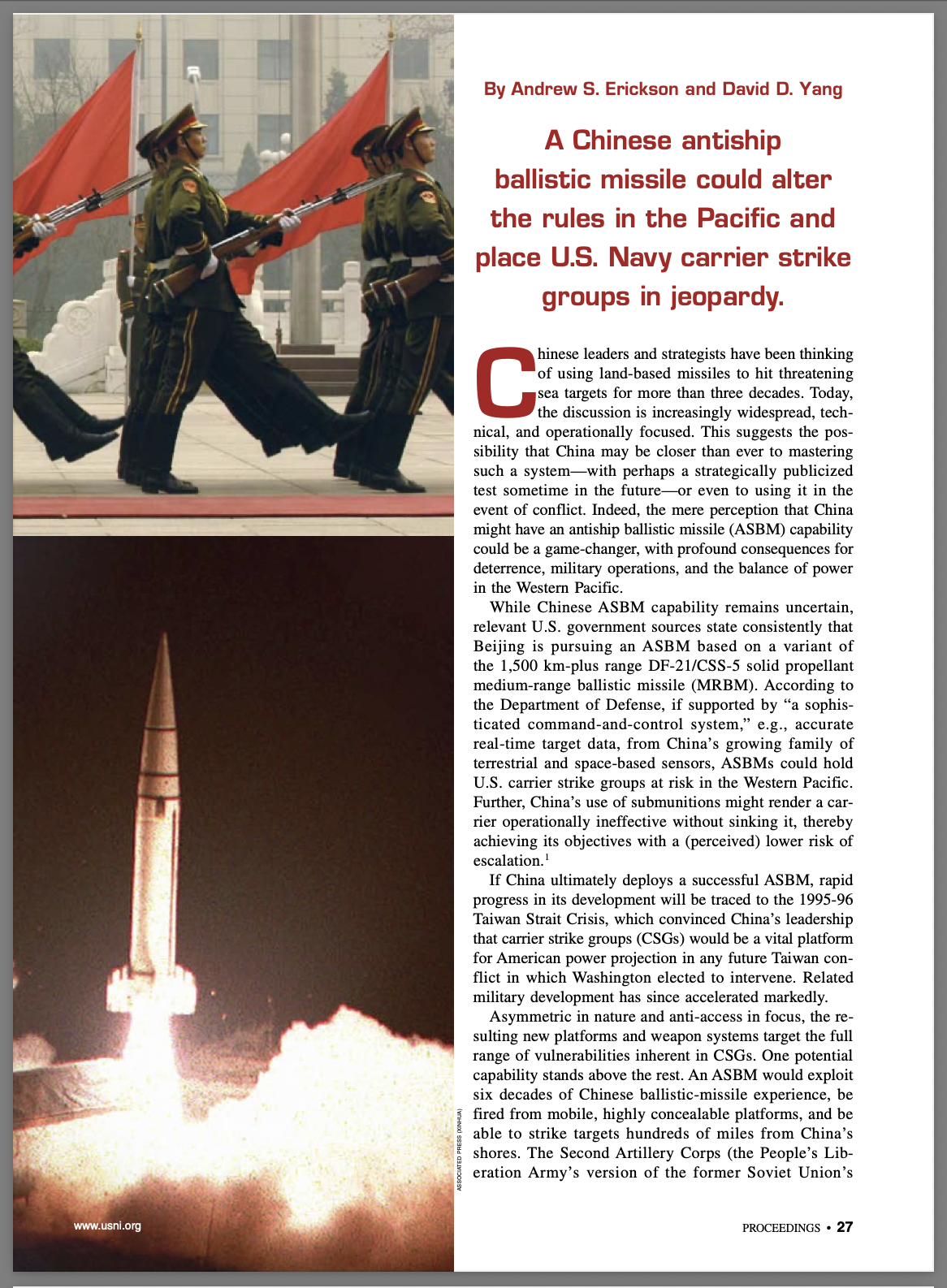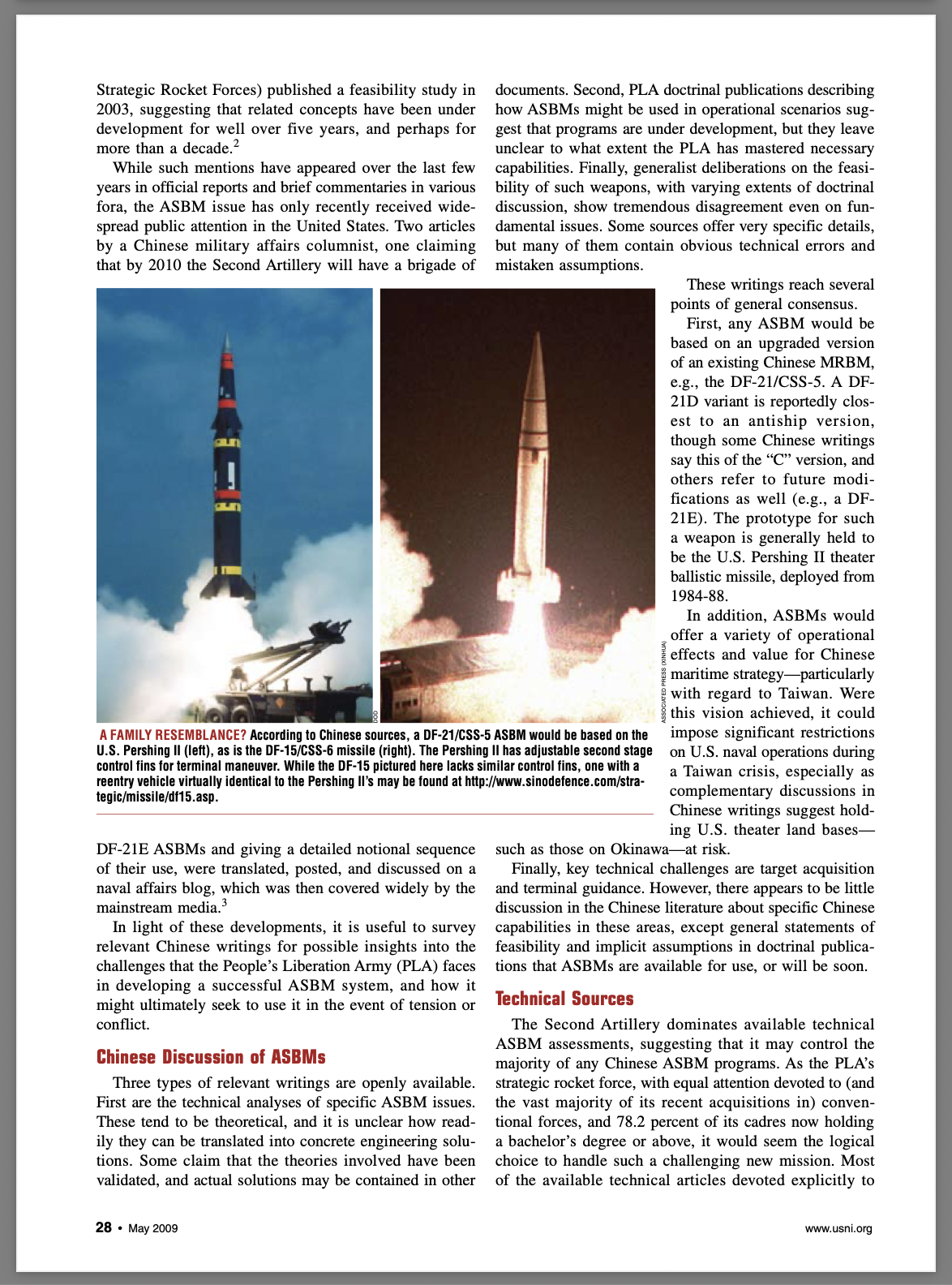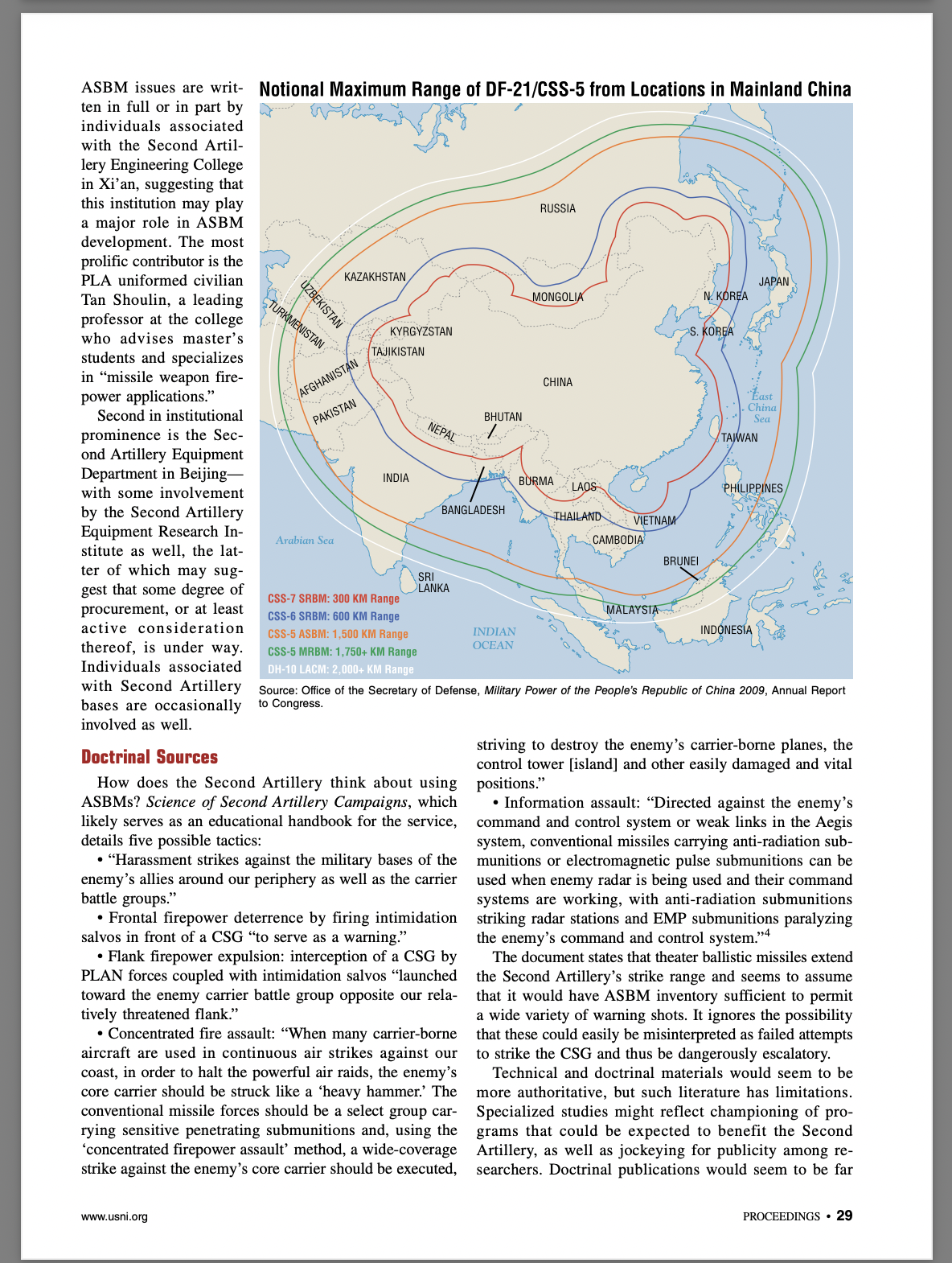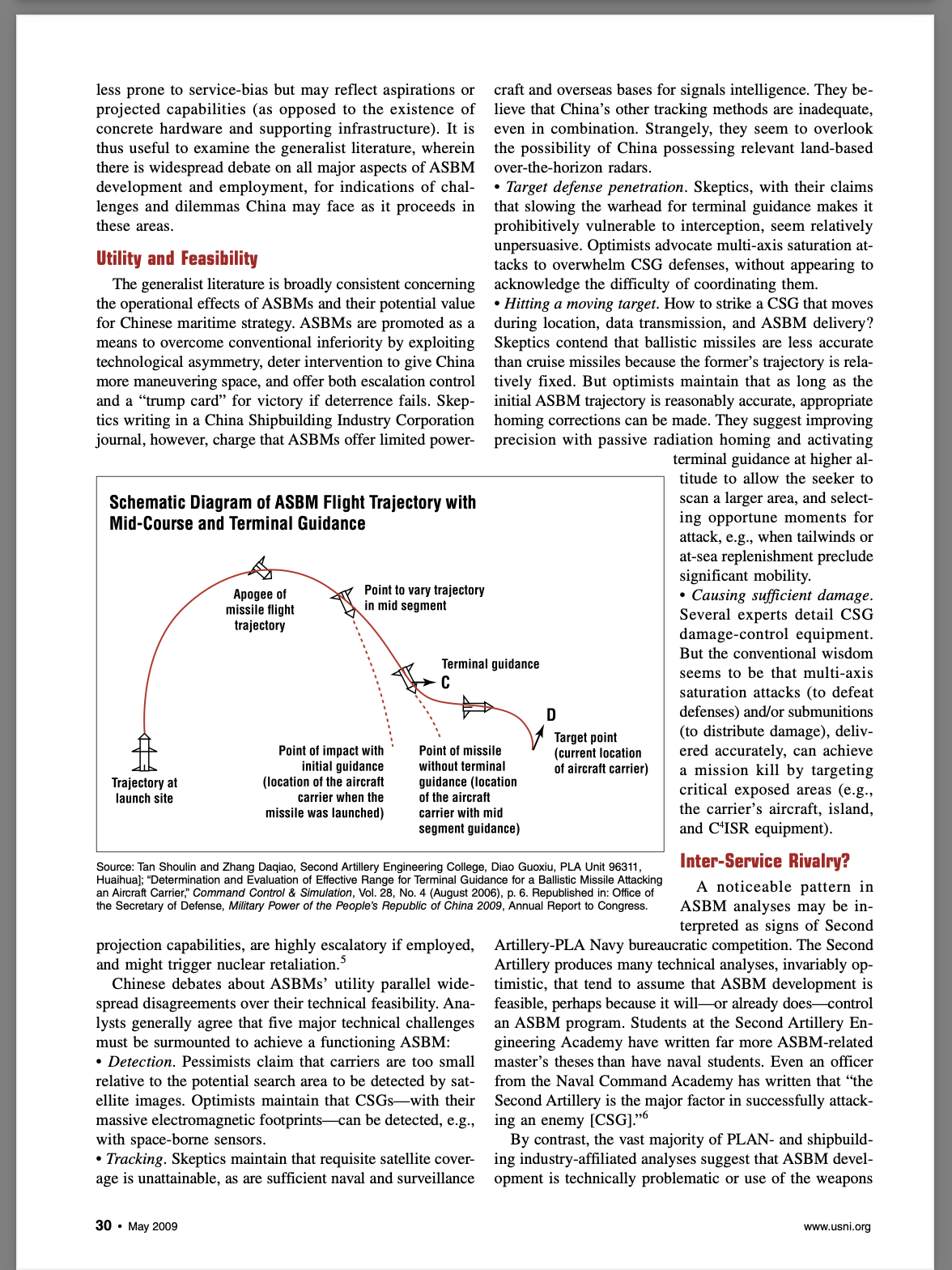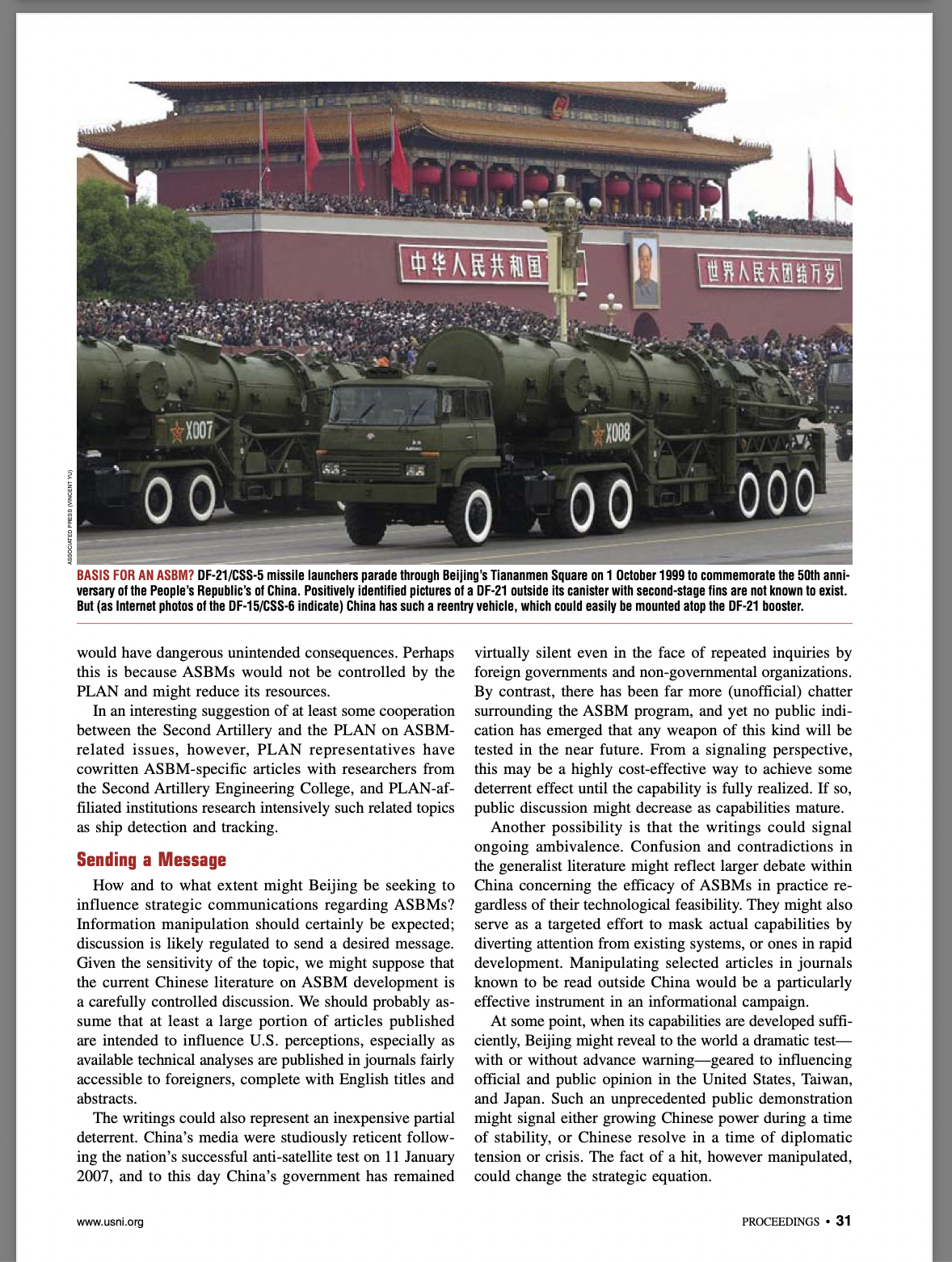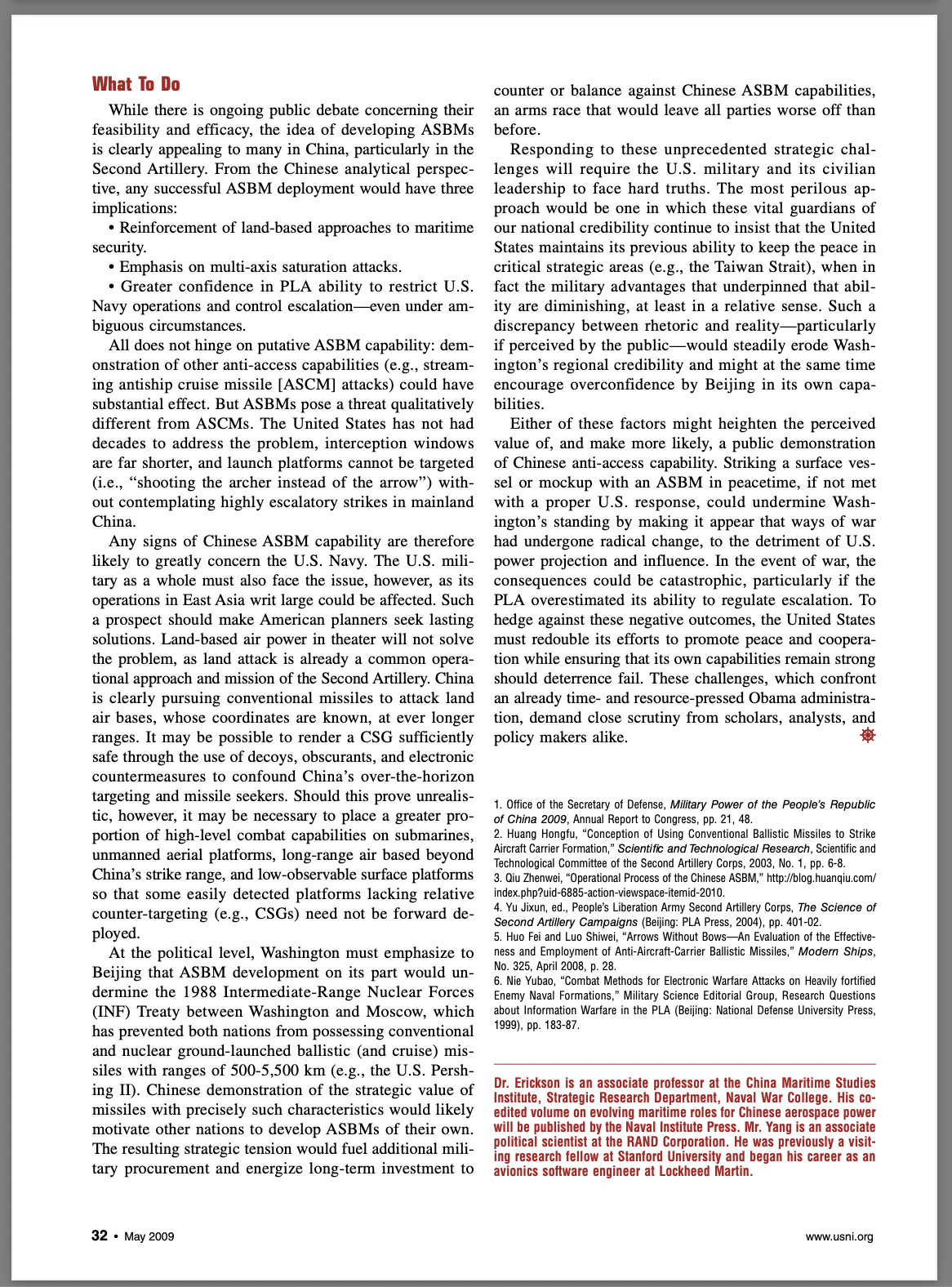On the Verge of a Game-Changer
Andrew S. Erickson and David D. Yang, “On the Verge of a Game-Changer,” U.S. Naval Institute Proceedings 135.3 (May 2009): 26–32.
This article won the U.S. Naval Institute 2009 General Prize Essay Contest (Third Prize).
While Chinese ASBM capability remains uncertain, relevant U.S. government sources state consistently that Beijing is pursuing an ASBM based on a variant of the 1,500 km-plus range DF-21/CSS-5 solid propellant medium-range ballistic missile (MRBM). According to the Department of Defense, if supported by “a sophisticated command-and-control system,” e.g., accurate real-time target data, from China’s growing family of terrestrial and space-based sensors, ASBMs could hold U.S. carrier strike groups at risk in the Western Pacific. Further, China’s use of submunitions might render a carrier operationally ineffective without sinking it, thereby achieving its objectives with a (perceived) lower risk of escalation.
If China ultimately deploys a successful ASBM, rapid progress in its development will be traced to the 1995-96 Taiwan Strait Crisis, which convinced China’s leadership that carrier strike groups (CSGs) would be a vital platform for American power projection in any future Taiwan conflict in which Washington elected to intervene. Related military development has since accelerated markedly. Asymmetric in nature and anti-access in focus, the resulting new platforms and weapon systems target the full range of vulnerabilities inherent in CSGs. One potential capability stands above the rest. An ASBM would exploit six decades of Chinese ballistic-missile experience, be fired from mobile, highly concealable platforms, and be able to strike targets hundreds of miles from China’s shores. The Second Artillery Corps (the People’s Liberation Army’s version of the former Soviet Union’s Strategic Rocket Forces) published a feasibility study in 2003, suggesting that related concepts have been under development for well over five years, and perhaps for more than a decade.
While such mentions have appeared over the last few years in official reports and brief commentaries in various fora, the ASBM issue has only recently received widespread public attention in the United States. Two articles by a Chinese military affairs columnist, one claiming that by 2010 the Second Artillery will have a brigade of DF-21E ASBMs and giving a detailed notional sequence of their use, were translated, posted, and discussed on a naval affairs blog, which was then covered widely by the mainstream media. In light of these developments, it is useful to survey relevant Chinese writings for possible insights into the challenges that the People’s Liberation Army (PLA) faces in developing a successful ASBM system, and how it might ultimately seek to use it in the event of tension or conflict. … … …


